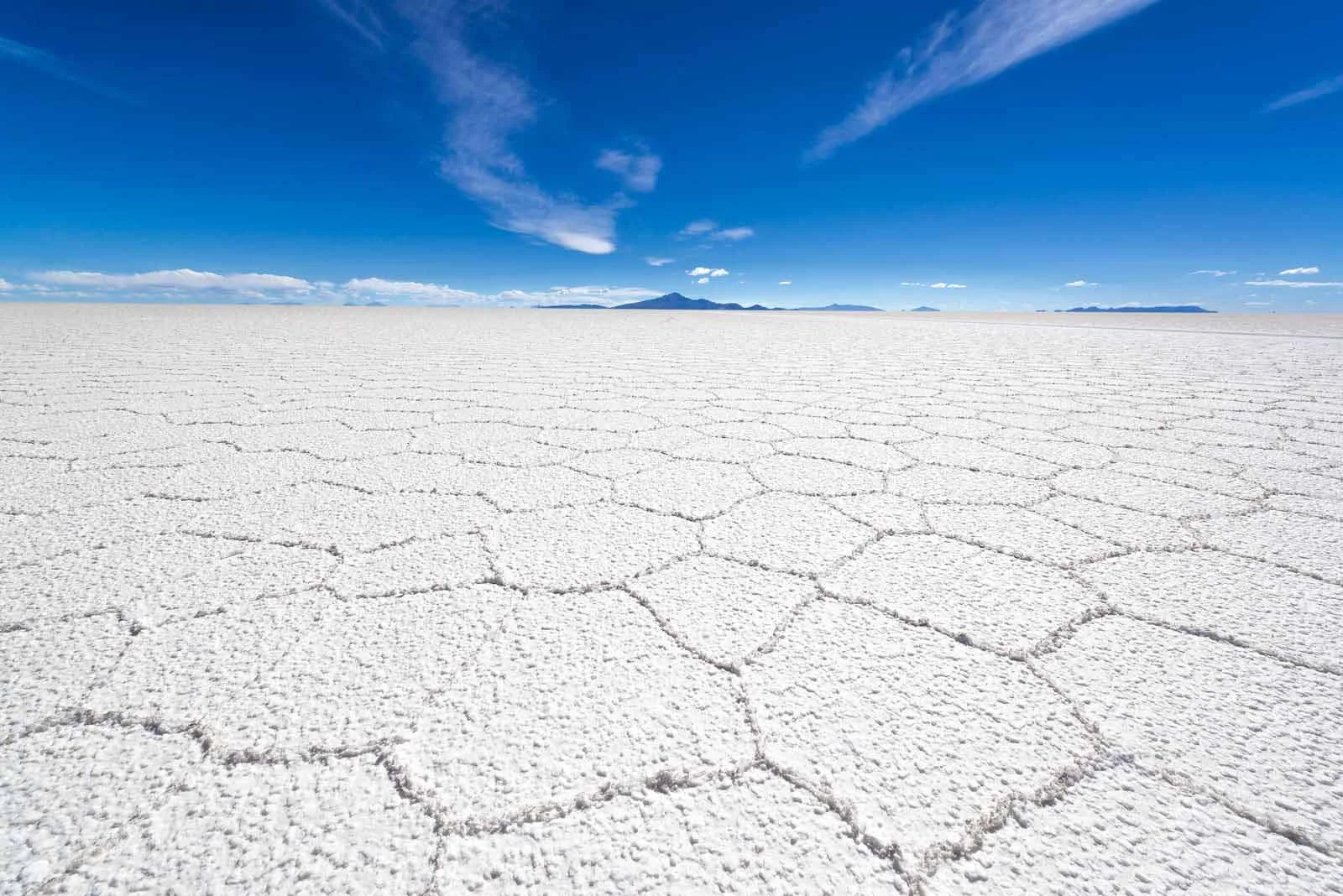
Salar de Uyuni: The world's largest salt desert and lithium reservoir surrounded by volcanoes | Travel News
Salar de Uyuni, the world's largest salt desert, spans approximately 4,000 square miles (10,400 square kilometers) across the Andean plateau. Known for its reflective salt surfaces covered in water and its striking honeycomb patterns in the arid sections, Salar de Uyuni is a mesmerizing landscape.
Salar de Uyuni sits at an average elevation of 12,000 feet (3,660 meters) above sea level, though this was not always the case. About 5 million years ago, the region was low-lying before the Andes mountains formed, according to Sarah McKnight, an assistant professor of hydrogeology at the University of Dayton in Ohio, who spoke to Live Science.
Over time, intense heat and minimal rainfall led to the evaporation of ancient lakes in the region, leaving behind layers of sediment and salt. Tectonic movements and volcanic activity later elevated these crusts to their current high plateau position.
Compared to other salt flats, like Chile's Salar de Atacama with a salt crust exceeding 3,300 feet (1,000 meters) thick in some areas, Salar de Uyuni is relatively thin, with a crust thickness of just 10 to 33 feet (3 to 10 meters), McKnight explained. The amount of salt accumulation on a salt flat depends on the area's geology, and the tectonic plates beneath Salar de Uyuni are less active than those beneath Salar de Atacama.
Beneath Salar de Uyuni's salt crust lies extremely salty water, or brine. Freshwater can also be found on top of the crust in some areas due to a process called "freshwater upwelling," McKnight said.
The salt flat is bordered by snow-capped mountains and volcanoes that provide meltwater to the crust's edge. This freshwater seeps under the crust but quickly separates from the brine because of the salinity difference. "Since freshwater is less dense than the brine, it essentially floats on top of the salt water," McKnight noted.
Freshwater upwelling occurs when freshwater migrates up through the crust to the surface, forming lakes on the salt flat. Salar de Uyuni has between six and eight such lakes, which are crucial for animals like flamingos that inhabit the desert, McKnight said. The lakes' sizes fluctuate with the seasons and drought conditions.
The freshwater trickling down from the surrounding peaks makes Salar de Uyuni one of the richest lithium reserves on Earth, McKnight said. The hydrothermal and volcanic activity in the Andes enriches the mountains with minerals, including lithium, which water collects as it flows over the rocks.
The salt flat is part of the "lithium triangle," a mountainous region that includes parts of Bolivia, Argentina, and Chile, containing 75% of the world's lithium, according to the Harvard International Review.
Salar de Uyuni likely holds the majority of this resource—about 11.2 million tons (10.2 million metric tons), or roughly 38% of the world's known lithium supplies, based on a 2012 study. The U.S. Geological Survey estimates the salt flat contains around a quarter of the world's supply, while the Harvard International Review suggests up to 50%.
McKnight said that any incoming water already slightly enriched with lithium from the Andes' hydrothermal and volcanic activity becomes increasingly concentrated over time due to evaporation.
Although resource exploration companies are interested in Salar de Uyuni, extracting the lithium economically is currently not feasible because it is so widely dispersed across the salt flat, McKnight said.
This is fortunate for the salt flat, she added, as "these desert ecosystems are incredibly fragile."
